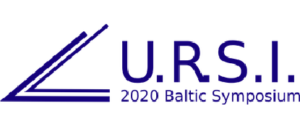PhD on Electro-Magnetics Fields and 5G
University of Lille (IEMN-IRCICA Lab)
L. Clavier (IMT Lille Douai), D. Gaillot (Univ. Lille)
J. Wiart (T´el´ecom Paris)
I. SUMMARY OF THE PHD
With the increasing use of wireless communication facilities [1], we live in a permanent electromagnetic field (EMF) that has induced concern and risk perception despite existing regulation. The people in charge of networks deployment, the ones who check the compliance of EMF exposure to safety limits are facing such questions [2]. The assessment of exposure requires specific equipment or simulation tools that can be complex to operate, contributing therefore to increase the gap between lay people and experts. The 5G deployment, that is just starting, reinforce these issues [3, 4] bringing new uncertainties resulting from the ever increasing band used and the beamforming induced by massive MIMO. This PhD will address these questions, several locks remaining to be overcome.
The objective is to be able to built an EMF exposure map. Today the EMF monitoring is carried out using measurement campaigns, These in situ measurements are of great interest but they cannot be performed everywhere. Taking advantage of progress in connected devices technologies, the exposure assessment has been investigated using connected sensors. Recently, wireless sensors, autonomous in energy, have been designed, and proposed. Associated in networks, these sensors are of great interest since they can grab the exposure’s temporal variations; nevertheless, since they are still localized they cannot, alone, provide an exposure mapping because of unsampled locations. Reconstruction using measurements localized in some specific places has been investigated using methods based on geostatistic and Gaussian processes [5, 6, 7]. Recently works have been carried out using Artificial Intelligence and machine learning [8, 9]. These works have been performed using simulations taking into account information that are available through databases (like the position of the base stations) as well as drive testing. Since these works dealt with simulations, confrontation with measures will require an adaptation of the method to increase the accuracy and take into account specific properties of the EM field. Many improvements can be studied. The first one is to include some data from the field, like the city density, the position of the base station, or any other significant parameters, which are publicly available. It is also possible to manage sensors of different qualities and to include mobile sensors to improve the reliability of the reconstruction. Taking into account the density of the sensors, the imprecision of the location and the measurement and the temporal evolution of the EM field also constitute research challenges.
II. ORGANISATION OF THE WORK
The work is based on data that will be measured in different locations in Lille. A large number of sensors (≈ 50) will allow to cover an area in the city center and another set of sensors will cover another place. The objective of the work is to develop a machine learning process to analyze the data and reconstruct in space and time the electro-magnetic field. This will allow to evaluate the exposure of a given person in the city.
III. REQUIRED SKILLS
Telecommunication, 5G. Part of the PhD is devoted to data processing and, possibly, measurement campaigns. Knowledge of Telecommunications is important and experimental abilities would be appreciated.
Machine learning
Python, Anaconda, Tensorflow
IV. TO APPLY
For further information or to apply, contact and send a CV to JoeWiart (joe.wiart@telecom-paris.fr), Davy Gaillot (davy.gaillot@univlille.fr) and Laurent Clavier (laurent.clavier@imt-lille-douai.fr).
REFERENCES
[1] L. Clavier, T. Pedersen, I. Rodriguez, M. Lauridsen, and M. Egan. Experimental Evidence for Heavy Tailed Interference in the IoT. working paper or preprint; https://hal.archives-ouvertes.fr/hal-02521928/file/ExpWCL 4p.pdf, March 2020.
[2] Joe Wiart. Radio-Frequency Human Exposure Assessment: From Deterministic to Stochastic Methods. 01 2016.
[3] Miroslava Karaboytcheva. Effects of 5g wireless communication on human health. Briefing PE 646.172, EPRS – European Parliamentary Research Service, March 2020.
[4] M. Egan, L. Clavier, M. de Freitas, L. Dorville, J. Gorce, and A. Savard. Wireless communication in dynamic interference.
[5] Sam Aerts, D. Deschrijver, L. Verloock, T. Dhaene, Luc Martens, and Wout Joseph. Assessment of outdoor rf-emf exposure through hotspot localization using kriging-based sequential sampling. Environmental research, 2013.
[6] A. Solin, M. Kok, N. Wahlstr¨om, T. B. Sch¨on, and S. S¨arkk¨a. Modeling and interpolation of the ambient magnetic field by gaussian processes. IEEE Transactions on Robotics, 34(4):1112–1127, 2018.
[7] Thomas Lemaire, Joe Wiart, and Philippe Doncker. Variographic analysis of public exposure to electromagnetic radiation due to cellular base stations: Variographic analysis of bts emf exposure. Bioelectromagnetics, 37, 10 2016.
[8] Sam Aerts, Joe Wiart, Luc Martens, and Wout Joseph. Assessment of long-term spatio-temporal radiofrequency electromagnetic field exposure. Environmental research, 161:136–143, 11 2017.
[9] S. Wang and J. Wiart. Sensor aided emf exposure assessments in urban environment using artificial neural networks. Int. Journal Environmental research and public health, 2020.In GLOBECOM 2017 – 2017 IEEE Global Communications Conference, pages 1–6, 2017.

